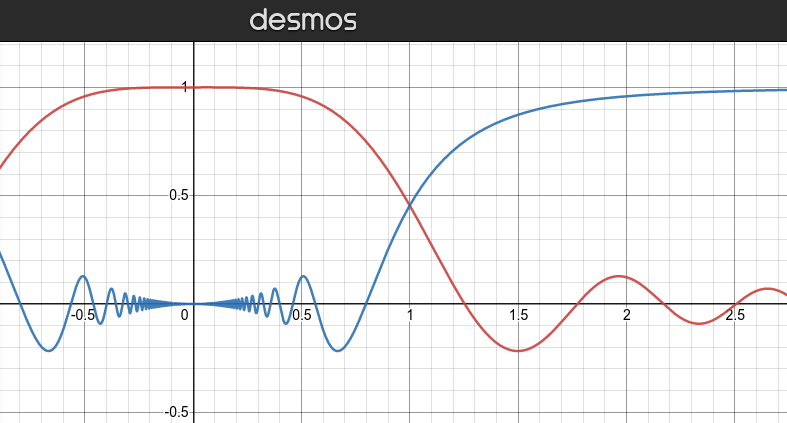I'm not sure if it's really possible to visualize it without creating another graph, but what you could do is take a function, like f(x) = sin(2x²)/2x², and graph f(x) and f(1/x) on the same graph. Notice how the peaks and valleys of the red function, f(x), and the blue function, f(1/x), correspond to each other.

You could do that double plot with g(x) = <math>(1+x)^{1/x}</math>, although the graph would be more boring and it would be harder to see what is going on.
(If the g(x) expression says "Math input error", then it's supposed to read (1+x)<sup>1/x</sup>.)


















